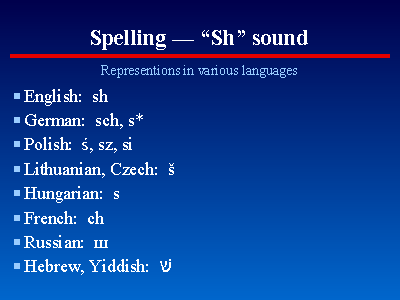 |
 |
Ask yourselves how a certain sound may have been represented in the language of the person writing the document. In English, we write the letters sh for a certain sound; in German, that same sound is represented as sch. The same sound is represented different ways in Polish (sz, or si, or an s with an accent mark), Lithuanian and Czech (š), Hungarian (s) or French and Portuguese (ch).
For example, a ship clerk on a German ship probably wrote the name of a Lithuanian Jewish immigrant named "Sheina" as "Scheine", while a clerk on a Polish ship might write it as "Szejna", and a French clerk might write it as "Chéna". When interpreting written documents, always keep in mind the linguistic background of the person who wrote the document.